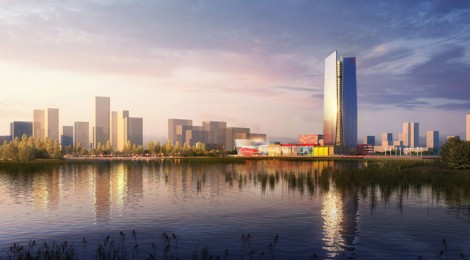
More metro than macro – the economic potential of the city
Deyan Sudjic has likened the city to a forcefield, one in which mobility and ideas are the energy of the city flowing through the network within which a burst of energy can occur apparently randomly, a catalyst for development. Daniel Libeskind has, similarly, talked about the city being not a two dimensional grid to be filled but being defined by spatial peaks and valleys, a way of representing the mix and intensity of uses. As such, cities should be planned to foster creativity by maximising the
potential for human interaction and the exchange of ideas, and to capture the results for the benefit of the city and its citizens.
Cities bring opportunities for wealth generation and for creative inspiration than can result only from face-to-face contact with others.
In fact the crush of people living in close quarters fosters the kind of collaborative creativity that has produced some of humanity’s best ideas, including the industrial revolution and the digital age. Edward Glaeser in his recent book ‘Triumph of the City’ similarly views the city from the opposite end of the telescope from Howard, regarding urbanisation not as a source of blight, but of vitality and opportunity, where the absence of space between people reduces costs so enabling cities to produce more and critically, allowing a flow of ideas. Richard Florida also has highlighted the flow of ideas – creativity – as the lifeblood of the economy and of the unique juxtapositions of place and people that urbanisation creates and that allow ideas to develop and form. Furthermore urbanisation brings about face-toface encounters, enabling people to learn from one another. No technology yet invented allows people to pick up the contextual cues – the frantic texting mid conversation, or the glazed eyes, for example, that suggests we’ve lost the listener – that enable us to develop ideas and do business.
The notion of the urban forcefield, allied to a BDP understanding of urban placemaking, creates a framework for evaluating and designing cities and places that is less a simple response to issues of urban capacity, less infrastructure and technology
led and more based on the rationale of cities and why they work. Facilitating human interaction and urban exchange is as relevant a model for the city and for economic development today and in tomorrow’s cities as it was for Vitruvius in the Roman forum.
The city as the solution to global economic, environmental and social challenges.
Urbanisation has to be viewed hand in hand with economic development. From an economic perspective, cities bring people and goods closer together, help overcome information gaps and enable idea flows. In excess of 95% of global GDP is now generated in urban areas. Certainly it has been easier to understand why economists have embraced cities as engines of prosperity rather than environmentalists, for whom urbanisation has been seen as, on the one hand, forcing the denudation of the environment to feed the city and, on the other, a
source of increasing pollution.
Cities can in fact play a vital role in cutting carbon emissions whilst remaining the engines of the economy. Much has been done to develop the model eco-city, though these are more laboratory than blueprint. Compact, relatively densely occupied cities with mixed-use urban forms are far more resource efficient than any other settlement pattern. And green cities can further improve social equity and quality of life, for example through enhanced public transport that both improves access to public services and reduces congestion. Per capita, the urban population treads more lightly on the earth than its rural counterparts; dense urban infrastructure is more efficient, more suitable for smart technologies and urban housing takes less energy to heat, cool and light.